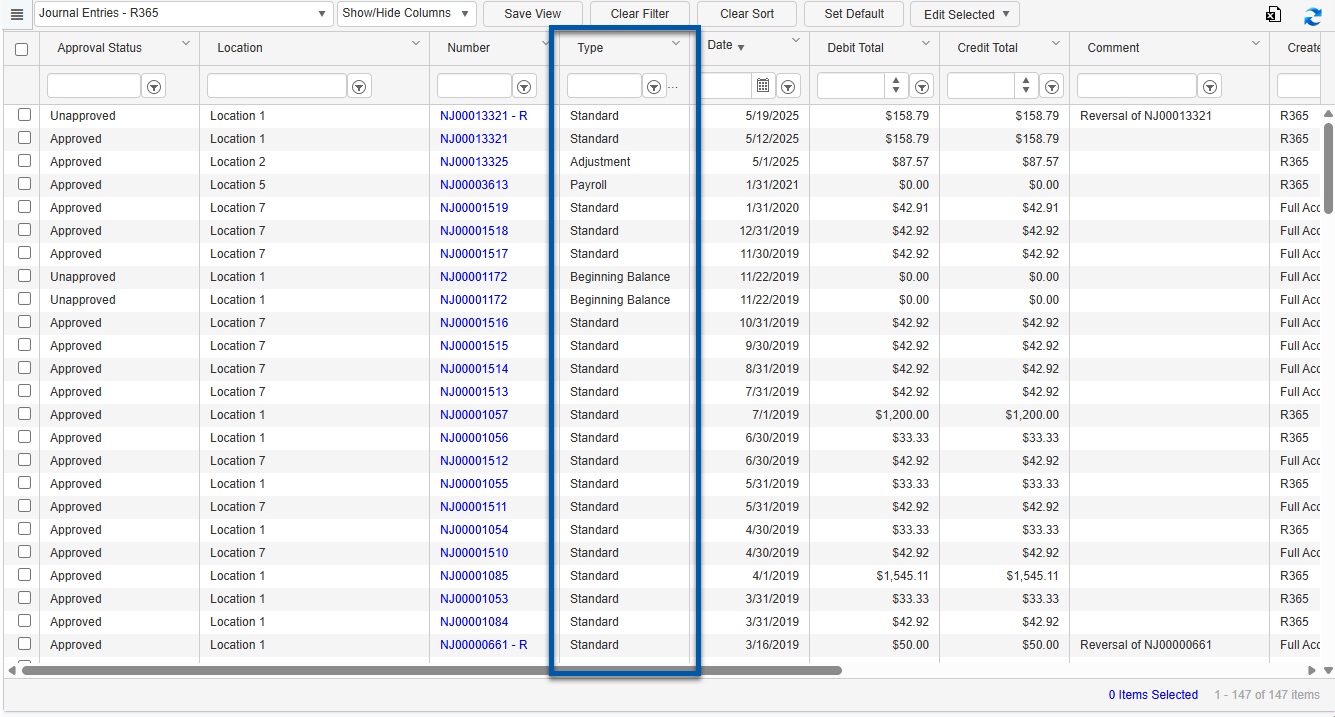Each manually entered or imported journal entry in R365 is assigned a Journal Entry Type. This designation helps users quickly identify entries in the Journal Entries, All Transactions, and Transaction Details list views.
Journal Entry Types
Journal Entries that are manually-created in R365 or imported via csv can be assigned one of the following types:
Standard: The default type used for recording daily transactions.
This is also the default type for imported journal entries unless otherwise specified.
Amortization: Used to allocate the expense of an intangible item over a service period.
This type serves as an identifier only and does not connect to the spreading function.
Adjustment: Used to correct a standard journal entry entered in the current or a prior period.
Beginning Balance: Used to record remaining balances from a legacy system during implementation. Invoices received or payments made after the initial beginning balance entry can also use this type, but must be dated prior to the organization’s Go-Live date. This type is available only through import or the ‘administration’ menu.
Payroll: Used to enter payroll data or true-up labor accrual entries generated from daily POS imports. Learn more about payroll journal entries.
List Views
Users can view Journal Entry Types from the Journal Entries, All Transactions, and Transaction Details list views.
